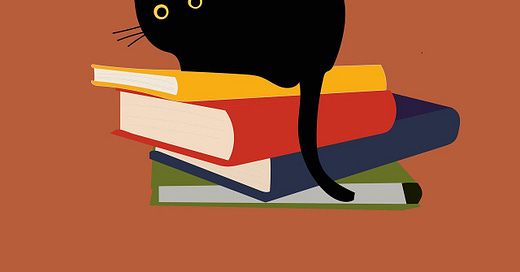4 books for seed savers and bean buffs
It's week 3 of Save Our Seeds - with book recommendations that may surprise you.
Dear Climate Culinarians,
It’s week 3 of our seed saving journey! Time to put on the kettle, brew a cuppa and enjoy a book. Okay, my suggestion may have been inspired by a power outage in my area earlier today in freezing weather. After two hours sticking it out, I retreated to reading a nice, old school hardcover book under two blankets, dreaming of a steaming drink.
Anyway: This edition is dedicated to reading recommendations. This month’s theme is seed saving and food plant biodiversity. If you missed the previous editions, go read Part 1 „Why local heirloom vegetables are important“ to learn about just that, and explore Part 2 „Is seed saving illegal?“ for answers and actions you can take. Now, let’s find some books!
Seed Saving: 4 very different books
I love to share what I’ve been reading - and also what’s in my “books to read next” stack. Here’s my special selection around vegetable seeds.
How to turn a garden or patio into a seed saver’s place
Seed to Seed by Suzanne Ashworth (Chelsea Green Publishing, 2002)
This book repeatedly showed up during my research, but I haven’t used it (yet). It’s like a seed saving encyclopedia for 160 different vegetables and herbs. Suzanne Ashworth explains how to take a seed and grow it until it produces seeds, and then how to harvest and store these seeds. Along the way, she provides information for different regions in the U.S. However, this part is not up to speed with the latest changes in climate we all have been experienced. The latest edition is from 2002 - fingers crossed for a new one!
A seed bank history that reads like a war thriller …
The Forbidden Garden by Simon Parkin (Scribner, October 2024)
… because it is. At least that’s what I think while I’m half way through this book. Author Simon Parkin describes how Russian botanists make the decision to defend biodiversity with their lives - preserving a seed bank during the Nazi siege of Leningrad from 1941 to 1944. The very well-researched book starts with Nikolai Vavilov, a botanist who founded what’s considered the world’s first seed bank. From the 1920s, Vavilov travels the world collecting rare vegetable seeds. His goal: breeding super productive food plants to end starvation in Russia. In 1940, Vavilov gets caught up in Stalin’s totalitarian system that represses science, prioritizes ideology and demands absolute loyalty. After the botanist is arrested by Stalin’s secret police, the Plant Institute’s staff soon faces impossible decisions. Can they preserve tons of seeds in a city cut off from food supply - and keep themselves from starving?
A pretty trendy cookbook
The Bean Book by Steve Sando with Julia Newberry (Ten Speed, September 2024)
Of all the seeds we love to eat, these seem to be the flavor of the season: beans. But that’s not the only reason why Steve Sando’s new cookbook has been making waves. Sando runs a company that sells heirloom dry beans and has aquired a cult-like following. In the book, he first explains his personal cooking method for dry beans, followed by brief profiles of 50 bean varieties, then 100 recipes like a lima bean succotash or Greek slow-baked garbanzos. Of course the food photography is mouth-watering. But what I like most are the pictures of those bean varieties: Their colors alone are a strong argument for saving these seeds.
How you can build community - around tiny seeds!
Seedswap - The Gardeners Guide to Saving And Swapping Seeds by Josie Jeffery (Roost Books, 2014 - available second hand or in your local library)
I found this little book in my local library and enjoyed reading in the dead of winter. It felt so cozy! I think that’s because it’s organized around communal activities. Seed swaps, of course, but also other forms of activism like running a seed library or making seed bombs. Practical advice is accompanied by background information, and the second part of the book is dedicated to a „seed directory“ for popular vegetables, herbs and a few flowers.
Have you read any of these books? Do you know other great books that focus on seeds or food plants? Share them with me and all the other Climate Culinarians in the comments!
And after all this talk about food plants, there is a recipe on the horizon. I’ve been pushing around seeds in my kitchen last week, and I’ll go at it again on the weekend for a last test of my … nope, you gotta wait until next week for a taste.
Read, eat, repeat!
Petrina
Climate Culinarians is a project by me, Petrina Engelke. I write about climate, food and the U.S., and I help other writers turn their ideas into a book people want to read. In other words: I’m a journalist and a book coach.



